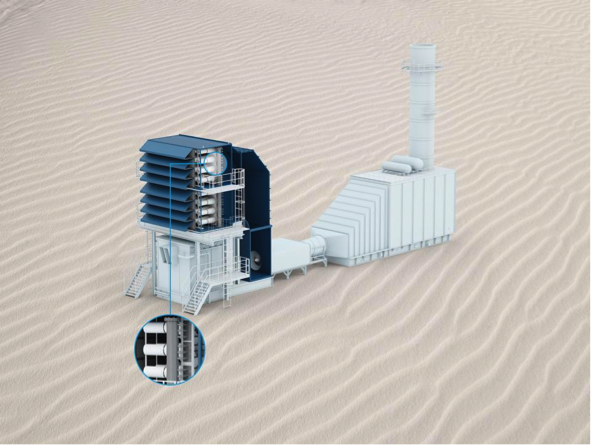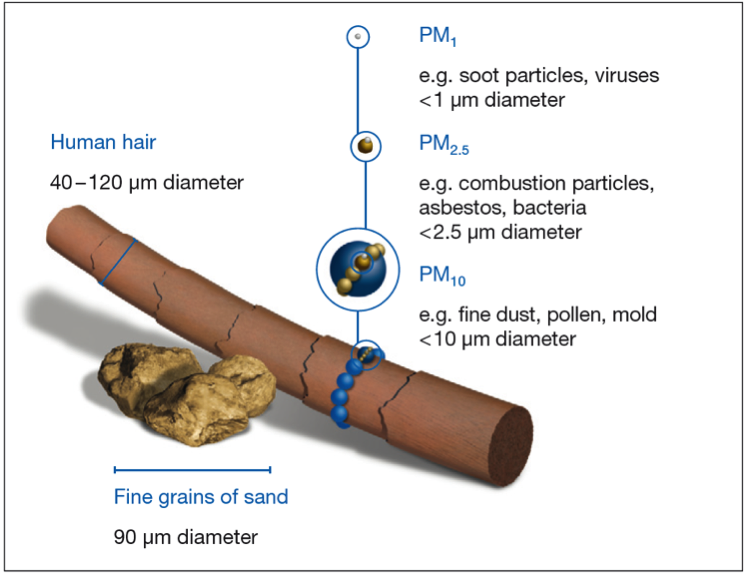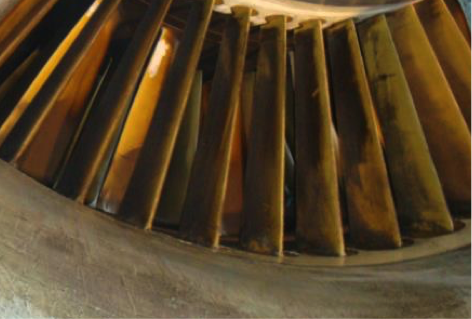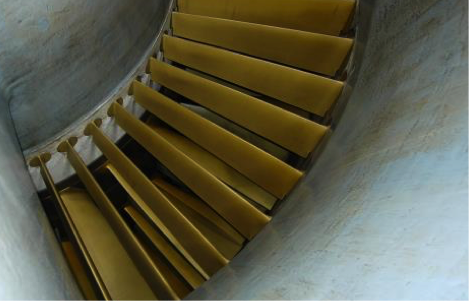Guest blog by:
Thomas Schroth, Freudenberg Filtration Technologies SE & Co KG, Weinheim*
Dr. Thomas Caesar, Freudenberg Filtration Technologies SE & Co KG, Weinheim
The new ISO 16890 standard for filter testing and evaluation was officially published in November 2016 and will replace EN 779 no later than mid-2018. This new method for the assessment of air filter elements represents a paradigm shift. In the future, filter efficiency will be determined with regard to the fine dust fractions PM1, PM2.5 and PM10. These particle size ranges are also used as the basis for evaluating ambient air quality by many state environmental authorities.
On the basis of these comparative values, gas turbine operators can select their filters more precisely based on dust concentrations at the respective site locations.

Point of criticism: EN 779 limited to 0.4 micron particle size and related to ASHRAE test dust loading
The main criticism of classification according to EN 779 was its distance from reality. Under EN 779, the efficiency of an air filter was assessed as an average value calculated by means of loading steps with a synthetic laboratory dust, the so-called ASHRAE dust. However, this only involved the particle size 0.4 microns. Loading of the test filter with ASHRAE dust ensured a strong increase in efficiency and a correspondingly high mean value.
In practice, however, a much wider range of particle sizes is involved and the development of efficiency in terms of capturing atmospheric dust tends to be more flat or slightly gradual.
With the introduction of the new ISO 16890 standard, filter separation efficiency is evaluated in the laboratory without dust loading. Instead of taking into account only the 0.4 micron particle size, ISO 16890 assesses a wide spectrum of sizes between 0.3 and 10 microns. This allows the degree of separation for the fine dust fractions PM10, PM2.5 and PM1 to be determined.
The separation degrees ePM1 for the particle size range up to 1 micron, ePM2.5 for the particle size range up to 2.5 microns and ePM10 for the particle size range up to 10 microns are calculated from measured separation curves. The “e” stands for efficiency.

Image: Representation of particle sizes PM1, PM2.5 and PM10.
ISO 16890 provides four filter groups
Based on the separation levels described above, filters are divided into four groups. The prerequisite for each respective group is that a filter separates at least 50% of the corresponding particle size range.
For example, if a typical first-stage filter for gas turbines separates 60% of PM10 particulate matter, it is grouped as an ISO ePM10 60% filter. If a final-stage fine filter for gas turbines separates more than 55% of PM1 particulate matter, it is evaluated as an ISO ePM1 55% filter.
The same applies analogously for PM2.5 filters. In addition to fine dust filters, the new ISO standard also evaluates coarse dust filters as ISO coarse, i.e. filters that separate less than 50% of PM10 particles.


Image: Filtration grade differences at 6,000 hours. F7 or F8 (ISO ePM1 55% to ePM1 70%) grade filtration can cause fouling on compressor blades, whereas EPA grade E 10 (ISO ePM1 95%) filtration improve blade cleanliness considerably.
Benefits for gas turbine operators in the new ISO 16890 standard
Particularly advantageous for gas turbine operators is the ability to calculate how much dust passes through a multi-stage filter system on the basis of the new ISO standard for any given site location. The local concentrations of PM2.5 and PM10 particles required for this purpose are published on the websites of many environmental authorities.**
Have you considered the cost of compressor blades or compressor parts or fouling costs over the cost of good installation practice?
For more information on ISO 16890, visit http://www.freudenberg-filter.com/en/iso16890/ or, watch the video and let the expert, Dr. Thomas Caesar, give you all the relevant information.
* This guest blog post is based on the presentations that Thomas Schroth gave on V94.2 end user conference in Rome, and on GT26 end user conference in Madrid. Both conferences were organized by GTUsers.com.
** Here are some examples:
Real-time World Air Quality Index
WHO: Global ambient air pollution
Global Health Observatory (GHO) data
